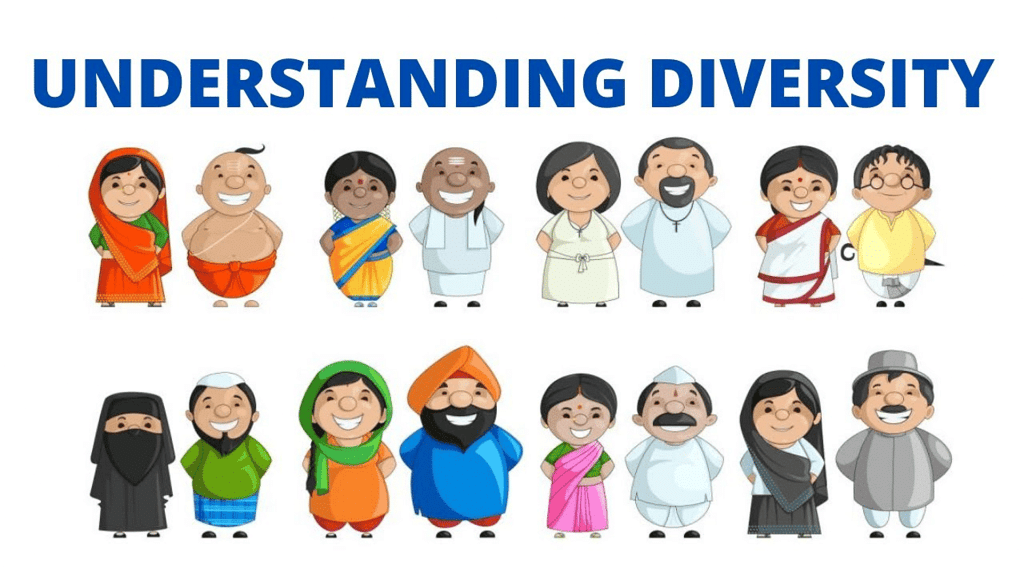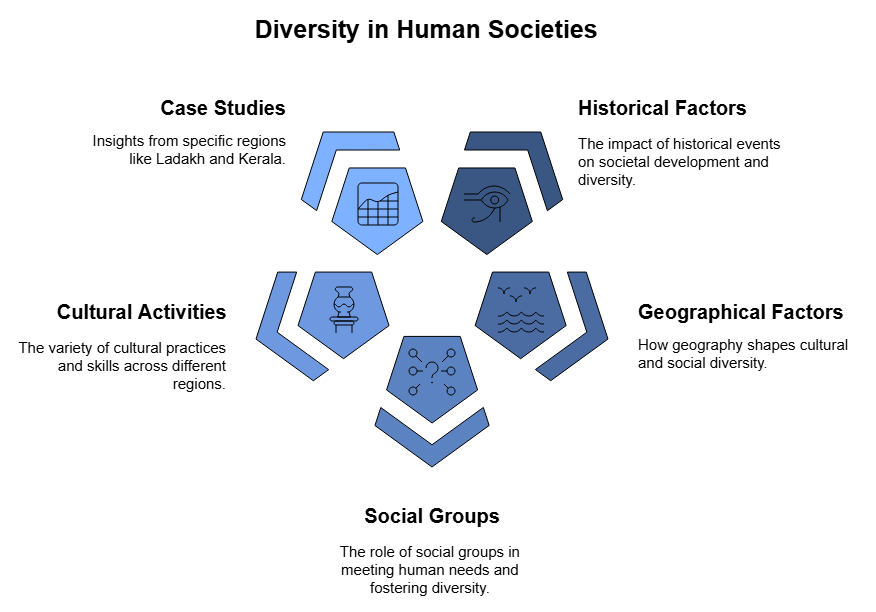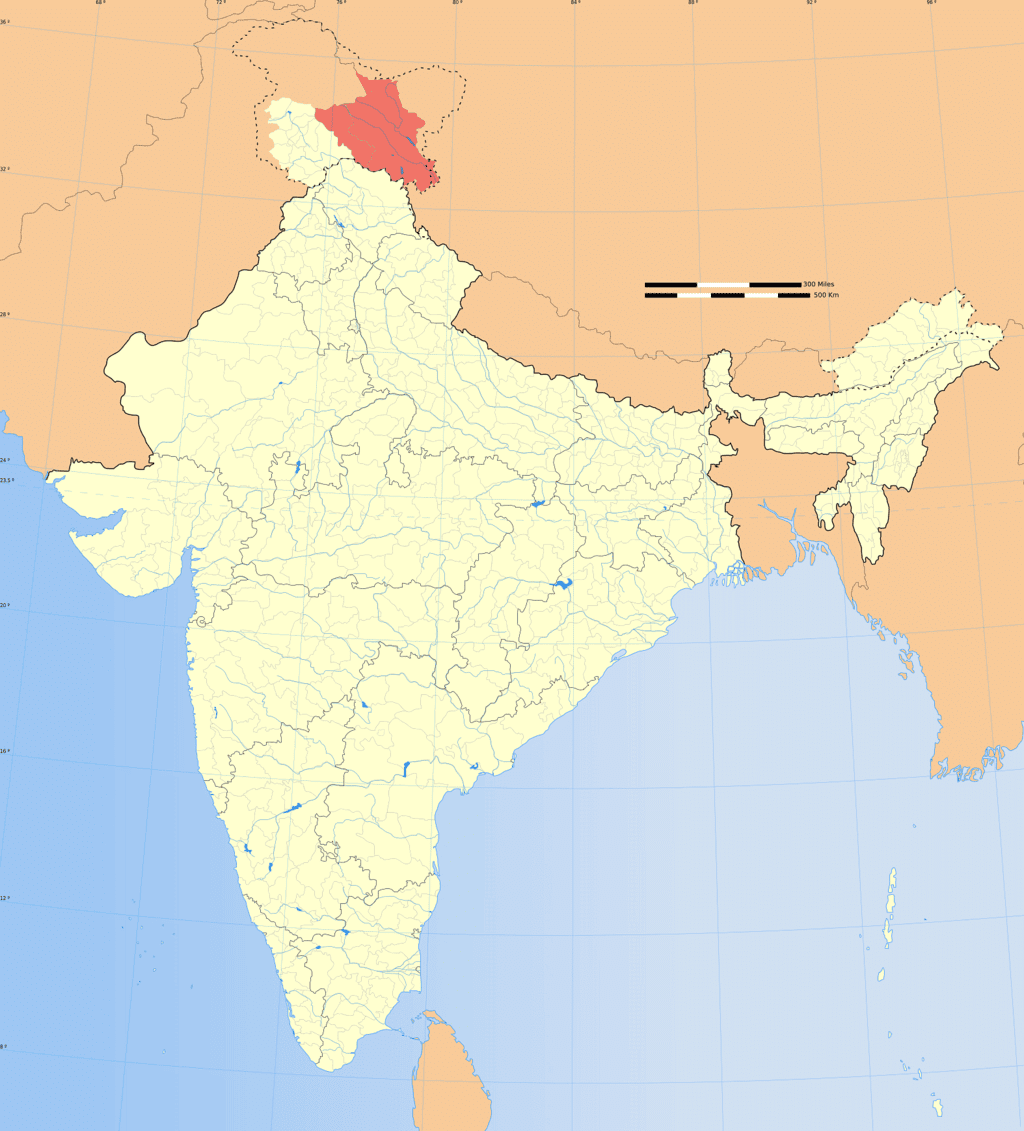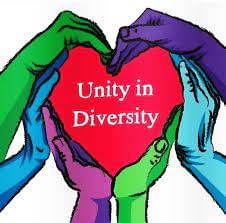CTET & State TET Exam > CTET & State TET Notes > Social Studies & Pedagogy Paper 2 for CTET & TET Exams > NCERT Summary: Understanding Diversity
Understanding Diversity Summary Class 6 Social Science Chapter 1
Diversity in India
- India is like a big example of how different and unique things can come together.
- In India, people speak many languages, enjoy lots of different types of food, and celebrate various festivals. Also, there are different religions, but everyone gets along peacefully.
- People differ in various ways – appearance, regional backgrounds, cultures, and religions. This diversity not only enriches our lives but also adds an element of enjoyment.

National Anthem and Translation
- The national anthem, "Jana Gana Mana," is introduced, emphasizing its role in fostering a sense of unity.
How do we Explain Diversity?
- In ancient times, humans lived as nomads, but eventually transitioned to a social life, giving rise to diversity.
- Humans, being social animals, rely on one another and their social groups to meet their various needs.
- Various social groups engage in different activities based on factors like culture, skills, geographic location, interests, and understanding.
- The diversity of a region is influenced by both historical and geographical factors.
- The diversity concept becomes clearer when examining Ladakh and Kerala as case studies.

Ladakh
- Ladakh, situated in the mountains of Jammu and Kashmir, unfolds a unique lifestyle shaped by extreme weather conditions, where the production of pashmina wool and the introduction of Buddhism and Islam have left indelible marks.
 Ladakh
Ladakh
Kerala
- On the other hand, Kerala, embraced by the sea and hills, showcases a diverse religious landscape and is renowned for its spice cultivation, influenced by the early presence of Jewish and Arab traders.
Kerala
Kerala and Ladakh
- Despite the stark differences between Ladakh and Kerala in terms of geography, both regions share common historical influences from Chinese and Arab traders.
- The cultivation of spices in Kerala and the wool trade in Ladakh were propelled by their distinct geographical features.
- This shared historical narrative underlines the unity that can be found amidst the apparent diversity.
Unity in Diversity
- India's diversity, recognized as a source of strength, played a pivotal role during British rule.
- People from diverse backgrounds united in the freedom movement, collectively opposing the British.
- The IPTA song, composed after the Jallianwala Bagh massacre, symbolized unity across religions, castes, and economic backgrounds.

- During India’s freedom struggle, songs and symbols like the Indian flag reminded people of the country’s diversity and traditions. The flag was used to protest British rule.
- In his book The Discovery of India, Jawaharlal Nehru wrote that India’s unity comes from within, not outside. It’s based on diversity, tolerance, and respect for all.
- Nehru described this as “unity in diversity” in his book.
- The national anthem, written by Rabindranath Tagore, reflects India’s unity in diversity.
The document Understanding Diversity Summary Class 6 Social Science Chapter 1 is a part of the CTET & State TET Course Social Studies & Pedagogy Paper 2 for CTET & TET Exams.
All you need of CTET & State TET at this link: CTET & State TET
|
75 videos|322 docs|78 tests
|
FAQs on Understanding Diversity Summary Class 6 Social Science Chapter 1
| 1. What is meant by diversity in India? |  |
Ans.Diversity in India refers to the variety of different cultures, languages, religions, and ethnicities that coexist within the country. It highlights the coexistence of multiple traditions and practices, which enrich the social fabric of Indian society.
| 2. How does diversity contribute to the strength of Indian society? |  |
Ans.Diversity contributes to the strength of Indian society by fostering tolerance, understanding, and cooperation among different groups. It encourages cultural exchange and promotes a sense of unity in diversity, which is essential for national integration.
| 3. What are the major forms of diversity seen in India? |  |
Ans.The major forms of diversity in India include linguistic diversity, religious diversity, cultural diversity, and ethnic diversity. Each region has its own languages, festivals, customs, and traditions, which reflect the rich heritage of the country.
| 4. Why is it important to respect and celebrate diversity? |  |
Ans.Respecting and celebrating diversity is important because it helps to create an inclusive society where everyone feels valued and accepted. It promotes social harmony and reduces conflicts, allowing individuals from different backgrounds to collaborate and thrive together.
| 5. How can individuals promote diversity in their communities? |  |
Ans.Individuals can promote diversity in their communities by engaging in open dialogues, participating in cultural events, educating themselves about different cultures, and advocating for equal rights and opportunities for all. This helps build a more harmonious and understanding community.
Related Searches

















